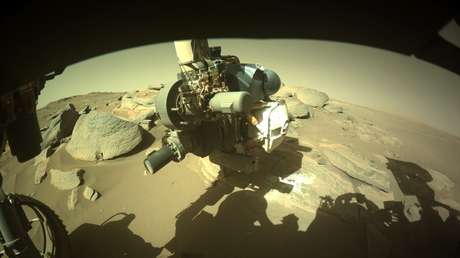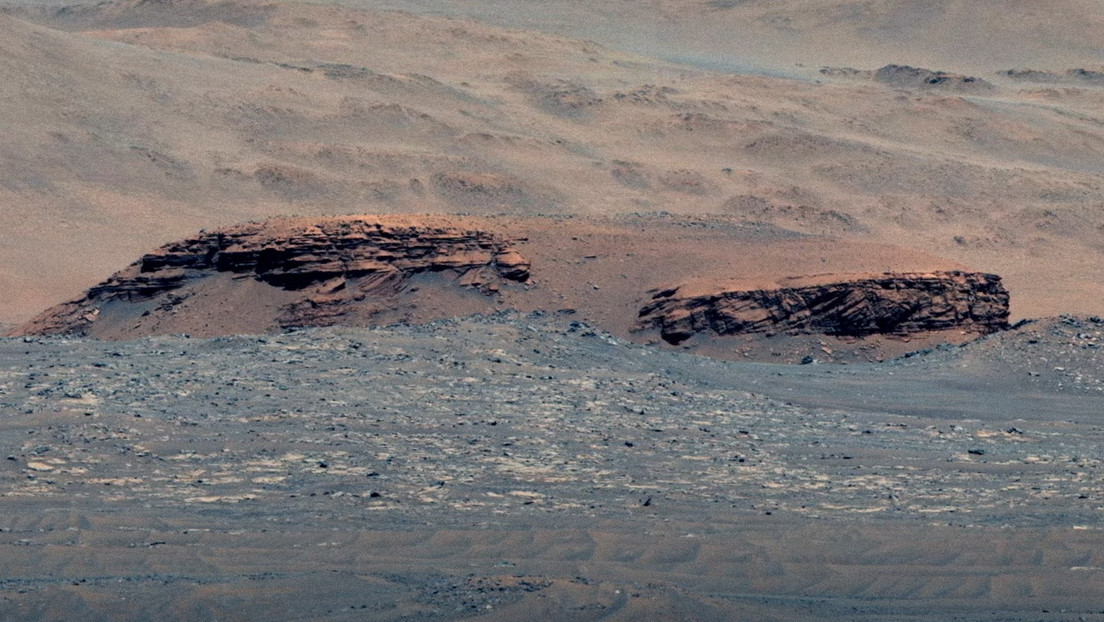Published:
16 dic 2021 12:16 GMT
Mission scientists have stressed that these findings have had implications for understanding important events in the history of the Jessero Valley and other parts of the Red Planet and for accurate dating.
Researchers from NASA’s diligent mission to Mars have discovered the foundation on which their rover has been traveling since landing on the planet last February. Made from red-hot magma.
Scientists have revealed that the rocks in the Gesero Greater have been in contact with water several times over millions of years, and some of them have been concluded. There are organic molecules.
The findings have implications for understanding Accurate dating of important events History of the abyss and other parts of the Red Planet, Comprehensive The research team at a conference during a meeting of the American Geophysical Union (AGU, its abbreviation in English) held in Louisiana this Wednesday.
Rock full of olives
Even before the rover landed on Mars, the mission’s scientific team wondered about the appearance of rocks in the area. In particular, they wondered if they were sediment (i.e., a compressed accumulation of mineral particles carried to the site by an ancient river system) or, conversely, if they were volcanic, they might have been born in a volcanic flow. The surface of the extinct Mars volcano.
“I started to get frustrated that the answer was not available“Said Ken Forley, professor of geochemistry at the WM Keck Foundation and a scientist in the diligence program.” But our PIXL tool saw a weather spot well on a rock from the area nicknamed ‘Southern South’. Everything is clear: the crystals inside the rock provided solid evidence, “he added.
The drill at the end of Perseverance’s robotic arm can scrape or grind rock surfaces so that other tools, such as the PIXL (X-ray lithochemical instrument) can read them. The instrument uses X-ray fluorescence to map the elemental composition of the rocks and analyzed a rock from southern Saitama on November 12th. Data show that it was made of this rock, named ‘Brock’ Unusual push of large olive crystals Pyroxene is ingested by crystals.
“It was Completely unexpected, We have a hard time understanding what that means, “said Forley. As mentioned above “But I’m going to guess that this is probably not the site of the original abyss. Due to the diameter of this abyss, we expect the site of the original abyss to be significantly deeper than where we are now,” he added.
It remains to be determined whether a thick volcanic eruption on the olivine-rich rock surface formed in the lake or later formed in an underground chamber exposed by erosion.
Organic molecules
Another great discovery tool is the detection of organic compounds Sherlock (Scanning the living environment by Raman & Luminance for Organics and Chemicals). Carbon-containing molecules are not limited to meteorological rocks analyzed by Sherlock. In the dust of indestructible rocks.
However, confirming the existence of organic matter does not mean that there was life in the Jessero groove and left story signs, scientists explained that biological and non-biological mechanisms would produce organics.

Curiosity, another space agency rover, has previously discovered organic matter in the Gale Crater, according to Luther Beagle, chief researcher at Sherlock’s NASA’s Jet Propulsion Laboratory. Connect those organisms with the minerals found there“.
Preservation of organic matter within ancient rocks – regardless of their origin – in both the Gale and Jessero Gorges may have preserved potential biological signals (signs of life, past or present). “This is an issue that will not be resolved until the samples return to Earth, but the protection of the organic matter is very high. When these samples return to Earth, Will be the source of scientific research and discovery for many yearsHe added.
If you like it, share it with your friends!





